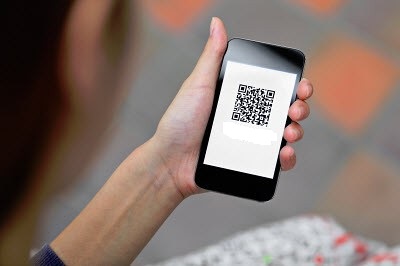New billboards and signs featuring quick response codes will be placed in locations worldwide.
Clear Channel, a company that currently has nearly 700,000 signs and billboards positioned in different spots around the globe is planning to add 75,000 QR codes to advertisements in areas that feature “heavy footfall and long dwell-time”.
This means that places such as bus stops, shopping malls, and airports will now see quick response codes.
The QR codes on the billboards will also have added SMS capabilities that make it possible to text people who are close by or to use near field communication (NFC) technology for the contactless transmission of information to devices that are located in close proximity. This converts the posters into a form of mobile marketing with considerable potential.
The QR codes and other technology will help to better connect with consumers who are on the move.
According to Clear Channel, the initiative, which they have called Connect, “presents the opportunity to target consumers on-the-go, when they are receptive to messages and can be delighted by timely, relevant and tailored invitations to engage.” That statement was made by the company’s chief operating officer, Suzanne Grimes.
These types of distractions, such as being able to scan a QRcode, are typically welcome in areas such as airports where people are looking for something simple to do in order to kill time. It isn’t something that they would likely do if they were in a hurry and were just walking from one place to another, but when they are forced to wait around, they will be far more willing to amuse themselves with activities such as barcode scans.
That said, to become effective, the ad needs to find some way to become noticed in the first place. Before consumers are able to scan QR codes, then need to actually realize that they’re there. It is in this area that Clear Channel has managed to stand out, as it has employed other technologies to draw more attention to itself and to make sure that its posters aren’t seen as simply passive atmosphere. This way, they become interactive features.
This augmented reality wearable technology is working hard to become more attractive for users.
One of the largest barriers that wearable technology has faced to widespread adoption has been that it hasn’t been all that conscious of fashion, and Google Glass has not been any exception to that rule.
However, that brand of augmented reality glasses is now partnering with top designers to leap ahead.
In this effort, Google Glass is soon going to be available through the makers of Oakley and Ray-Ban frames, to help to make sure that this internet connected, augmented reality wearable technology will become more appealing for people who are as concerned with the way that they will look using the tech as they are with the functionality of these internet connected gadgets.
This has become possible because Google Glass has partnered with Luxottica Group.
That Italian frame making company, which is also behind Ray-Band and Oakley products, will now be working with the Google to ensure that their eyewear will appear less sci-fi and geeky. This announcement has come close to another that was made with regards to wearables that will be sold by that company. They also revealed that Fossil Group is designing a smartwatch that will be based on the Android operating system for wearable devices.
The frames that will be developed by Luxottica will also include the various elements that are central to the augmented reality eyewear, including the camera, tiny display just out of the direct line of sight. The device currently costs about $1,500 though it unclear as to whether or not the Luxottica version will cost the same amount. What has been revealed is that as early as this year, the new and more stylish version of the wearables will be available at the over 5,000 Luxottica stores in the United States.
Until now, Google Glass has been sold only to a specific group of just over 10,000 test subjects that have been labeled “Explorers”. That said, while people do seem fascinated by the technology, they are unimpressed with the way that it looks when worn, nicknaming those same Explorers as “glassholes” for wearing gadgets that appear to be more appropriate in a cyborg movie than actual reality.


